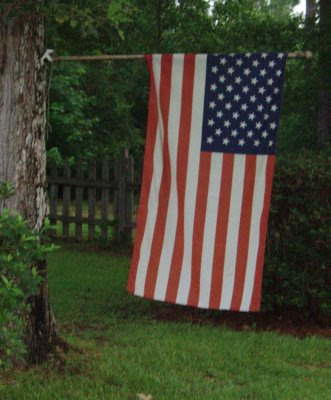 Journal Entry: June 19, 2009
Journal Entry: June 19, 2009: Weight = 174.4; Coinage = $.37 (if you count the residual dime found the evening before) 17 pennies, 2 nickels, 1 dime; Glass bottles retrieved = 7; Ground Scores = 3; Best finds = 2 beat-up curb nickels, both luck spots given their locations outside my usual scan radius. A bad coin day.
Feature Entry: Today we are in the Folsom, LA deep country, fifty miles north of New Orleans. Our Creole cottage is exactly two miles from a main road, but still asphalt except for .6 of a mile of gravel. The MoneyWalker has wanted to test his zoom speed for a while disinterested in anything but pace. So off I went, two miles out, two miles back.
These Folsom woods are full of houses but scattered on five and ten acre tracks. Most are permanent, not week-enders like the MoneyWalkers. Many have horses, but they call their places farms, not ranches. Few have pretentious house signs, just a simple mailbox; the exceptions are those that offer stud services. Fortunately most of the houses are stylishly if not architecturally designed; few shacks or aging trailers on Booth Road.
Country folks have dogs and many free roam. I carried a stick fashioned from an ancient bamboo groove near my house. Dogs proved not to be a problem but I was able to use the stick in much the way a horse uses its tail to discourage horse flies from biting the exposed calves of my legs. They are huge and their bite stings.
I had to teach myself to be observant of things forward, lateral, up and peripheral. For months and months I have trained myself to be hyper-observant of things downward and foveal. This walk would provide little opportunity for coinage, glass bottle retrieval, or calculated ground scores.
The rich Folsom soil produces giant loblolly pines; live oak, water oak, and majestic red oak; sweetgum trees; magnolia, tung oil (see photo above, our woods are full of these beauties), and the ubiquitous and insidious Chinese Tallow (not native, but now threatening traditional hardwood stands in the southeast U.S.)
Pastures were plentiful and picturesque. Many featured ponds that house large Canadian geese that somehow find a reason to live here year around. Other pastures were characterized by slow grazing horses, the male always quarantined away from the mares. There are few cattle along Booth Road.
We are currently in draught mode and only a few wild flowers have survived. Still there were ample wild blackberries to whet my appetite and a few wild iris still bloom.
Mission accomplished, 4 miles in exactly one hour. The MoneyWalker has a moderate paced zoom, just the pace recommended by Dr. Johnson. No coinage found, no bottles retrieved, and no ground scores. The MoneyWalker did quickly scan under each rural mailbox, but no dropped coins were spotted.
Impressions? Country walking has its charms, but come Sunday I will be gleefully back on the streets of New Orleans; posture upright with a downward forward right-left/left-right visual scan; and oblivious to anything except small round objects that wink and shine.
MoneyWalker
 Journal Entry: Weight = 175.0; Coinage = $.35, 25 pennies, one dime; Glass Bottles = 12; Ground Score = 1; Best coinage find = seven pennies from Century One friend.
Journal Entry: Weight = 175.0; Coinage = $.35, 25 pennies, one dime; Glass Bottles = 12; Ground Score = 1; Best coinage find = seven pennies from Century One friend.



















